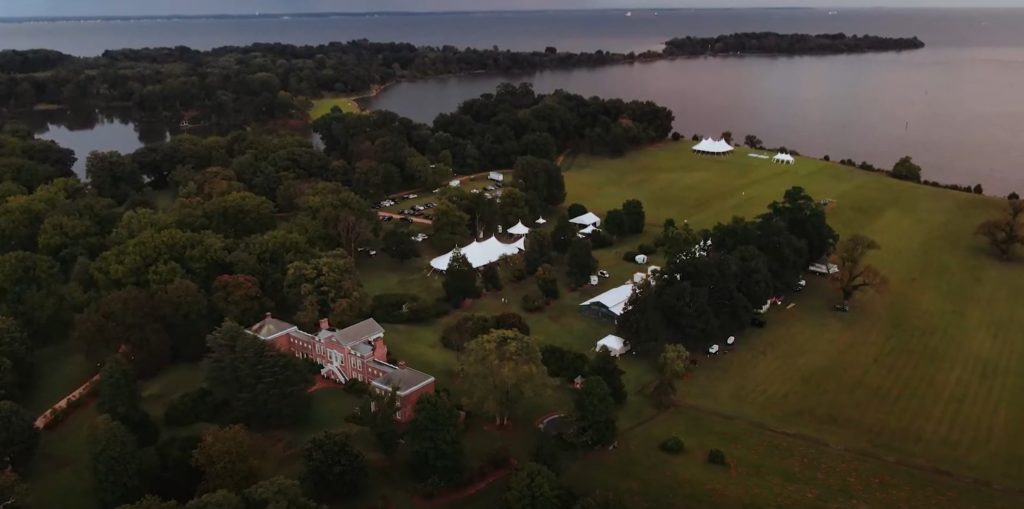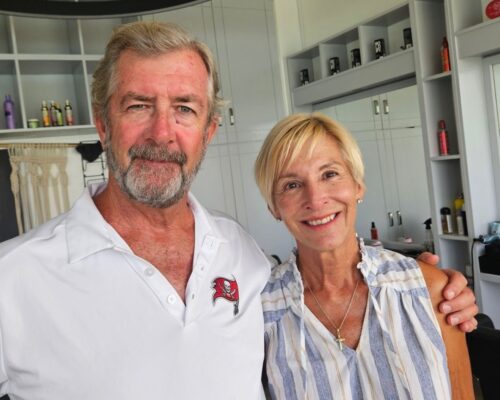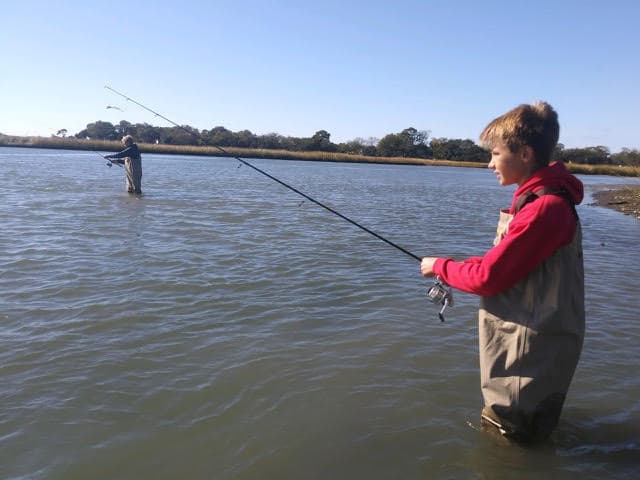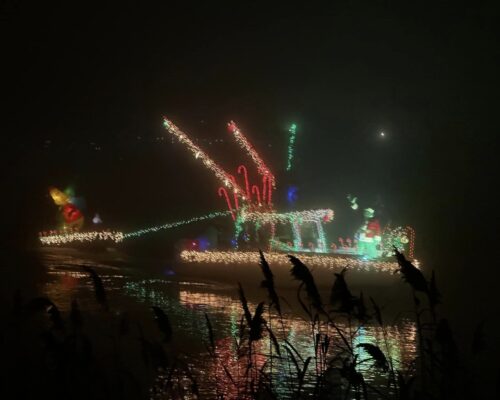The push is ongoing in Washington to designate the Chesapeake Bay as the National Park Service’s next National Recreation Area. The designation would bring federal resources, boost tourism and increase public water access to the Bay.
Senator Chris Van Hollen (D-MD) and Congressman John Sarbanes (D-MD 3rd) released a discussion draft for public review, detailing proposed sites that the National Park Service (NPS) would acquire or partner with: Burtis House (the last surviving waterman’s house at Annapolis City Dock), Whitehall (a 110-acre waterfront peninsula property just south of Sandy Point State Park), Thomas Point Shoal Lighthouse and the North Beach of Fort Monroe in Hampton Roads.
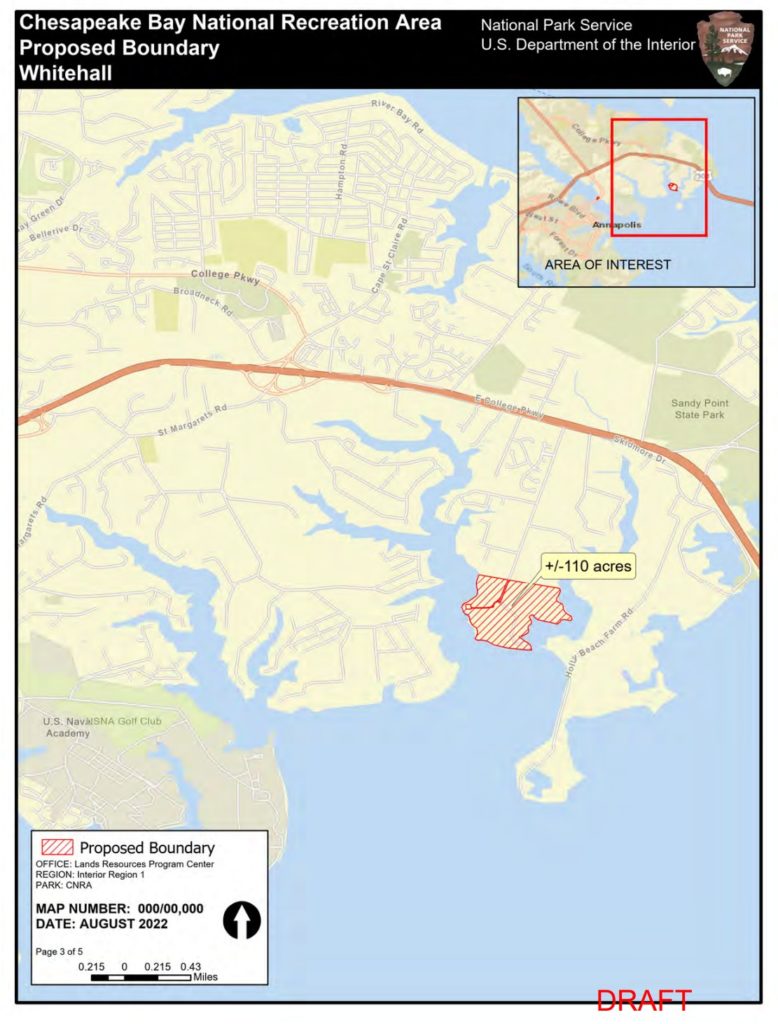
This first round of proposed sites would be acquired by voluntary sale or donation. A public comment period opened in November on the draft legislation, and it has just been extended until March 13.
A battle is brewing over at least one of the proposed National Recreation Area locations—Whitehall, off the last exit before the Bay Bridge. The property is on the Broadneck peninsula, an area that is vulnerable to gridlocked traffic spilling over from the Bay Bridge, as eastbound bridge travelers try to circumvent backups using local roads.
The Whitehall property is currently managed by a trust, IMPACT Collective, and it is a popular wedding venue. Its 1765 Georgian mansion is on the National Historic Register, designated the first National Historic Landmark in Maryland in 1960.
The property belonged to the last provincial governor of Maryland, Gov. Horatio Sharpe. The five-part brick building is about 200 feet long. It has a giant portico with Corinthian columns and overlooks Whitehall Bay.
Those behind the National Recreation Area see it as a piece of valuable waterfront that could become public access. But some neighbors see it differently. Anne Arundel County Councilmember Amanda Fiedler, who represents neighborhoods in the Broadneck peninsula, addressed her constituents in a Facebook post last week:
“I have met twice with the office of our Congressmen and have expressed my serious concerns about increased traffic on our already overburdened access roads and Rt. 50, especially during the peak of shore-bound traffic months. I appreciate the efforts to educate about the importance of our Bay, but it must be done in a way that doesn’t add burden to local communities. I hope this is a shared goal with our Congressmen.”
Fiedler urged residents to submit feedback while the public comment period is still open. Many residents echo her concerns, making comments online like, “Anyone who has attempted to get around the Broadneck Peninsula on a spring/summer Friday should be fighting this to the end. We are already gridlocked just trying to go from neighborhood to neighborhood. This would be a nightmare.”
But others see it differently. “A national park site would be phenomenal! More federal infrastructure, preservation and focus on keeping the area in good stewardship,” writes one resident.
Chris Hopkinson, founder of The Bay Paddle, a multi-stage race on the Bay that raises money for the Chesapeake National Recreation Area campaign, believes the rewards outweigh the traffic risk in this project. “I live in the Broadneck Peninsula and certainly understand concerns around traffic, but this is not just for the Broadneck Peninsula. This legislation is to help all 200+ miles of the Bay from Havre de Grace to the Atlantic with more public access points throughout,” he says.
He also points out that the National Recreation Area is estimated to potentially bring over $200 million in tourism dollars to the Bay region, boosting hotels, restaurants and small businesses.
Sen. Van Hollen’s office emphasizes that if the proposal becomes law, the National Park Service would launch a planning process allowing for public input on traffic planning, among other things. Van Hollen’s spokesman, Matt Slavoski, tells Bay Bulletin the transportation planning would consider ” livability, sustainability, climate resiliency, natural and cultural resources, visitor experience, and regional goals” both short- and long-term. It may include developing alternate routes or water-based access.
To give your input on the Whitehall Bay proposed National Park Service site or any facets of the proposed Chesapeake National Recreation Area, click here.
-Meg Walburn Viviano

